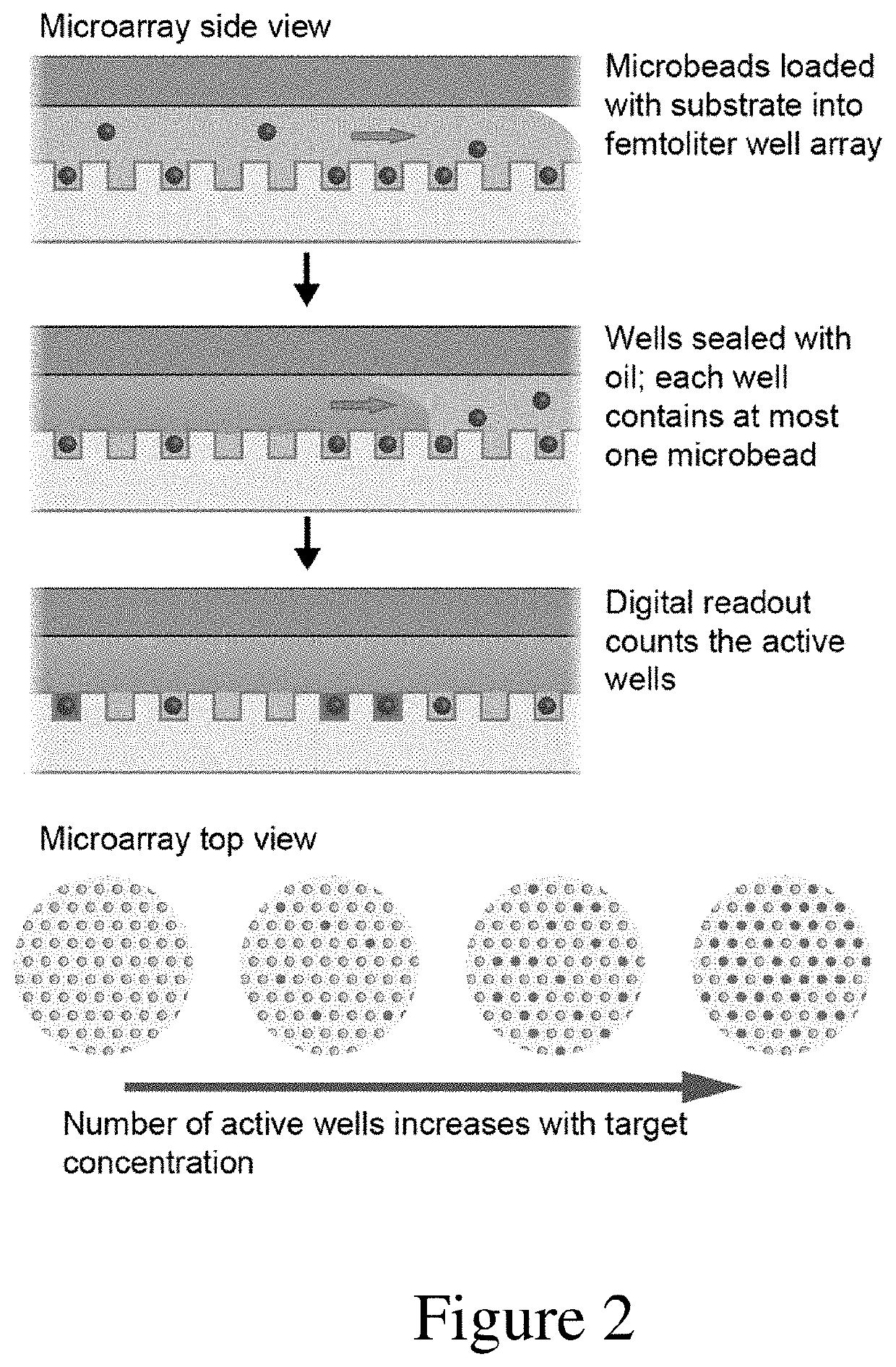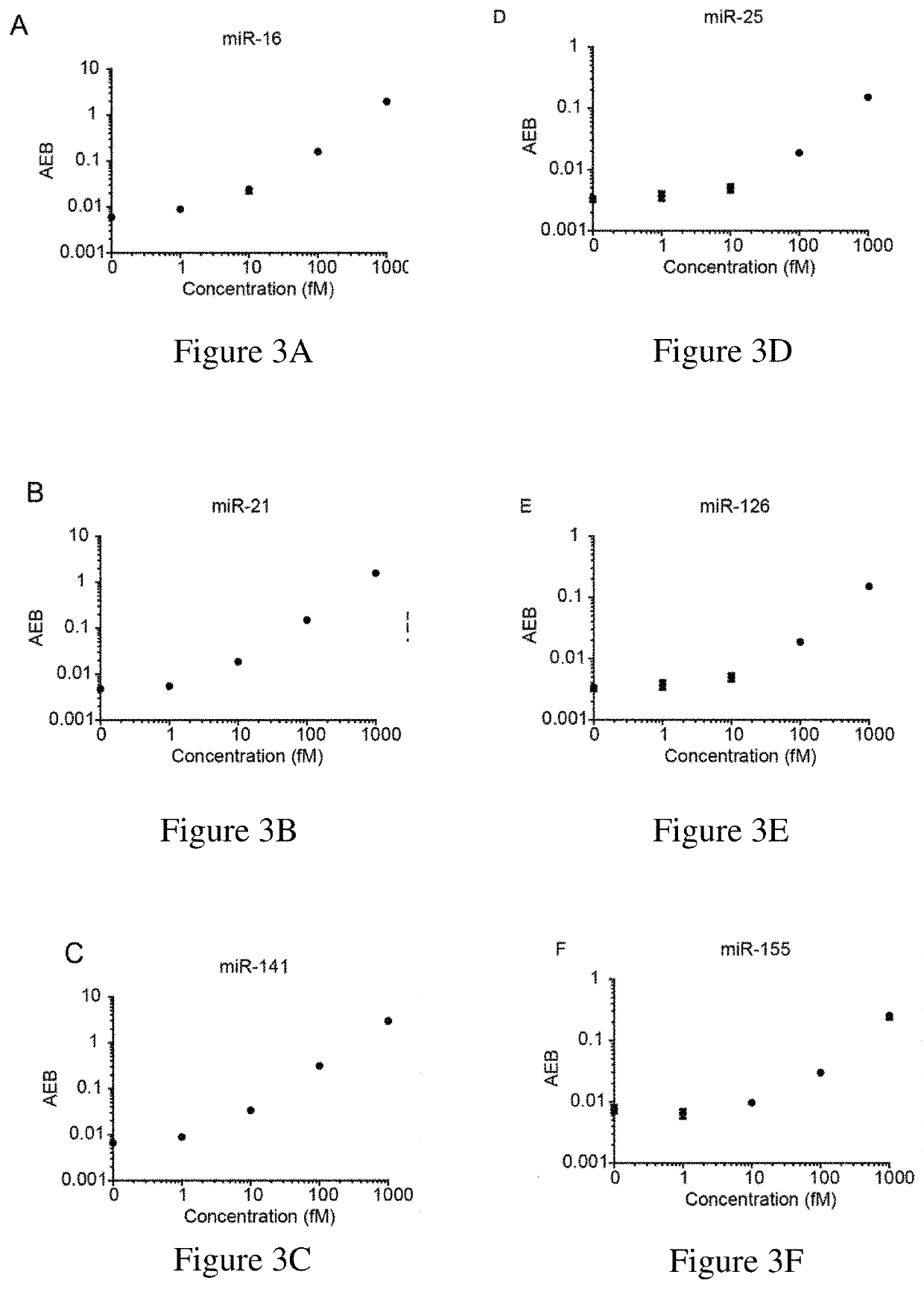Ultrasensitive assays for detection of short nucleic acids
a technology assays, applied in the field of ultrasensitive assays for detection of short nucleic acids, can solve the problems of incompatible standard pcr primers, inability to achieve ultrasensitive detection of single molecules of microrna, and inability to achieve standard pcr primers. to achieve adequate sensitivity, and the detection of multiple micrornas using microarray techniques requires extensive pre-amplification
- Summary
- Abstract
- Description
- Claims
- Application Information
AI Technical Summary
Benefits of technology
Problems solved by technology
Method used
Image
Examples
example 1
Ultrasensitive Assay Methods for Detecting microRNAs
Materials and Methods
Locked Nucleic Acid Probe Design
[0102]Locked nucleic acid (LNA) capture and detection probes were designed to be partially complementary to their intended target miRNA. The length of each probe and the placement of bases within each LNA probe were then selected based on the following criteria: (1) consistent melting temperature for both capture and detection probe; (2) strong predicted binding between each probe and the target sequence; and (3) low cross-reactivity between the capture and detection probes (in the absence of target). For each target miRNA, proposed designs for the candidate capture and detection probes were checked using the LNA Oligo Tm Prediction and LNA Oligo Optimizer tools on the Exiqon website. Probe designs were manually iterated to maximize the ratio of predicted target binding / predicted capture-detector binding and to ensure the secondary structure score for capture-detector hybridiza...
example 2
Design of Probes for Use in Detection of MicroRNAs
[0127]This example further describes the probe design in Example 1.
[0128]In order to explore the sequence-specificity and generality of the sandwich hybridization approach, the entire population of known human miRNAs, collected in the miRbase database, were considered in terms of two important parameters for the assay: sequence similarity and melting temperature.
Sequence Similarity
[0129]Alignment between Probes Tested in Example 1 and All miRNA Sequences
[0130]Distinguishing between homologous miRNAs can be difficult, whether sequence similarity between miRNAs would pose a serious challenge to the specificity of the assay was explored. First, the sequence complementarity between the individual capture and detector probes used in Example 1 and the population of human miRNAs in miRbase were considered. Match scores were calculated by a pairwise alignment of all probes, using a gapless Smith-Waterman algorithm, against a database of all ...
PUM
| Property | Measurement | Unit |
|---|---|---|
| Temperature | aaaaa | aaaaa |
| Temperature | aaaaa | aaaaa |
| Melting point | aaaaa | aaaaa |
Abstract
Description
Claims
Application Information
 Login to view more
Login to view more - R&D Engineer
- R&D Manager
- IP Professional
- Industry Leading Data Capabilities
- Powerful AI technology
- Patent DNA Extraction
Browse by: Latest US Patents, China's latest patents, Technical Efficacy Thesaurus, Application Domain, Technology Topic.
© 2024 PatSnap. All rights reserved.Legal|Privacy policy|Modern Slavery Act Transparency Statement|Sitemap



